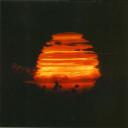Yahoo Answers is shutting down on May 4th, 2021 (Eastern Time) and beginning April 20th, 2021 (Eastern Time) the Yahoo Answers website will be in read-only mode. There will be no changes to other Yahoo properties or services, or your Yahoo account. You can find more information about the Yahoo Answers shutdown and how to download your data on this help page.
Trending News
Where does this paper discuss feedback of water vapor?
http://enso.larc.nasa.gov/ceres/pub/conference/Min...
This paper was cited by an atmospheric physicist here as a source for showing water vapor/cloud data from the Aqua satellite suggests that increased water vapor leads to a negative feedback for radiative forcing. I can't find it in the paper, it seems to me to be a discussion of how multilayer clouds are retrieved from the sensors on Aqua. The closest I can find to this is the Spencer et al. paper from last summer, but Spencer used data from Terra, not Aqua, and the negative feedback trend found by Spencer et al. is mainly due to data from a few months towards the end of his time series.
So, does anyone know where Minnis et al in the paper above discuss feedbacks and forcings? Alternatively, where is a real source showing data from Aqua indicate a negative forcing due to increase in water vapor?
Thanks Ken, but those are DOE/ARM papers, using surface observations, and don't use NASA/Aqua data. I want to know, specifically, what Aqua dataset shows the feedback from water vapor is a negative forcing.
Eric: That is the uncorrected tropospheric temperature records. We've been through this ad nauseum, that you don't feel there is a problem with the raw satellite data is irrelevant as far as mainstream, peer-reviewed science is concerned. Christy is the lead author of an NAS report detailing how the raw mid-trop temperature records need to be corrected for stratospheric cooling. In any event, that is not Aqua data in that paper.
The bottom line is that as far as Aqua is concerned, the above reference cited as showing a problem, doesn't, and should not be used as such.
Eric: Here is an analysis from the guys at RealClimate.org on the Douglass et al paper. I know you don't believe a word they say, but they are better at this climate stuff and radiative forcing than Christy. Christy is just a satellite weenie who gets paid to dispute climate.
http://www.realclimate.org/index.php/archives/2007...
Also, from the RealClimate article, a different peer-reviewed paper from different climate guys who are also smarter than Christy who find a conclusion opposite to Douglas et al.:
http://www.agu.org/pubs/crossref/2007/2007GL029875...
When the smoke has settled, the Douglas et al. results will be buried scientifically because they are wrong.
3 Answers
- KenLv 51 decade agoFavorite Answer
Here's Minnis's publication list:
http://www-pm.larc.nasa.gov/pages/minnis_pubs.html
I suspect it may be in this paper (I'm reading it now):
http://www-pm.larc.nasa.gov/arm/pub/journals/Wang....
Edit:
I think this may be the paper you want:
- eric cLv 51 decade ago
The report is published in the December 2007 issue of the International Journal of Climatology of the Royal Meteorological Society [DOI: 10.1002/joc.1651]. The authors are Prof. David H. Douglass (Univ. of Rochester), Prof. John R. Christy (Univ. of Alabama), Benjamin D. Pearson (graduate student), and Prof. S. Fred Singer (Univ. of Virginia).
Co-author John Christy said:. Satellite observations suggest that GH models ignore negative feedbacks, produced by clouds and by water vapor, that diminish the warming effects of carbon dioxide.”
Edit: I agree with you on the study you link to, and will not post it. The interview about the satellite data is generating a lot of buzz in the blogs. I am sure later they will reveal the study.
The study is not flawed. balloon data supports the christy's findings. He corrected his finding and showed a slightly higher warming, but still cooler than what the models show.
Co-author John Christy said: “Satellite data and independent balloon data agree that atmospheric warming trends do not exceed those of the surface. Greenhouse models, on the other hand, demand that atmospheric trend values be 2-3 times greater. We have good reason, therefore, to believe that current climate models greatly overestimate the effects of greenhouse gases. Satellite observations suggest that GH models ignore negative feedbacks, produced by clouds and by water vapor, that diminish the warming effects of carbon dioxide.”
Do I know more than the scientists, no. Does Christy? Yes.
- HereticLv 41 decade ago
From what I understand Minnis used a lot,and I mean a lot of referrence material and sources. Through a date would have been resourceful. I did isolate that sensor degradation of the Aqua was corrected by Lyu and Barnes (2008). They developed a responsive (gain) correction.





